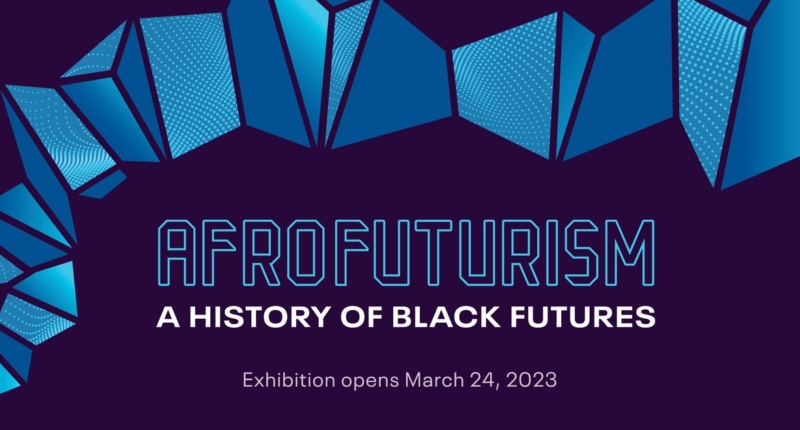The National Museum of African American History and Culture is hosting an exhibit called “Afrofuturism: A History of Black Futures” that explores Black culture through a futuristic lens. The exhibit features interactive displays, artwork, and rarely seen artifacts that examine the history of Afrofuturism. The exhibit is divided into three parts, the last section called “Infinite Possibilities,” showcasing Afrofuturism’s connection to space and liberation, technology, digital activism, and popular media. The exhibit features notable items such as the Black Panther costume worn by Chadwick Boseman and Vernon Reid’s guitar. The exhibit aims to explore Afrofuturism’s engagement with African American history and popular culture. The exhibit runs until March 2024.
Afrofuturism: A History of Black Futures Exhibit to Open at the National Museum of African American History and Culture
The National Museum of African American History and Culture is set to unveil a new exhibit called “Afrofuturism: A History of Black Futures” on March 24. The exhibit will allow visitors to get up close with iconic artifacts like George Clinton’s wig and the Black Panther suit worn by Chadwick Boseman.
Afrofuturism is a concept coined by scholar Mark Dery in 1990, which explores Black culture through a futuristic lens. This movement uses various forms of media, including music, film, literature, fashion, and theater, to reinterpret and reclaim the past and present and imagine a more empowering future for African Americans. By envisioning what “Black” could look like in alternate worlds and galaxies, Afrofuturism encourages people to think beyond current realities and envision new possibilities.
The museum’s press release states that the exhibit aims to explore Afrofuturism’s engagement with African American history and popular culture. Kevin Young, the Andrew W. Mellon Director of the National Museum of African American History and Culture, describes Afrofuturism as a mix of celebration and resistance, musicality and theatricality, achievement, and survival. Music has played a significant role in Afrofuturism, from the Negro spirituals down to jazz and gospel, funk, and hip-hop.
The exhibit is divided into three parts. The first part, called “The History of Black Futures,” showcases how enslaved individuals looked to the cosmos to imagine and plan their freedom. The second part, “New Black Futures,” explores how Black Americans have navigated technological advances and used art, literature, music, and film to confront racism and envision new futures for African Americans outside the realities of racism and segregation.
The exhibit is located inside the museum’s Bank of America Special Exhibitions Gallery and promises to provide visitors with an immersive and educational experience. This exhibit invites visitors to explore Afrofuturism’s historic and poignant engagement with African American history and popular culture.
Overall, the Afrofuturism exhibit is a unique opportunity for visitors to learn about Black culture and history from a futuristic perspective. By exploring new possibilities and envisioning a better future, Afrofuturism empowers African Americans and encourages them to take control of their narratives.
Explore “Infinite Possibilities” of Afrofuturism at the National Museum of African American History and Culture
The “Afrofuturism: A History of Black Futures” exhibit at the National Museum of African American History and Culture concludes with a section called “Infinite Possibilities,” showcasing Afrofuturism’s connection to space and liberation, technology, digital activism, and popular media. Visitors can experience how Black Americans have used comics, animation, music, film, and digital technology to create liberated worlds and landscapes.
The exhibit features over 4,000 square feet of space filled with interactive displays, artwork, and rarely seen artifacts that examine the history of Afrofuturism. Among the highlights are Octavia Butler’s typewriter, Vernon Reid’s guitar, Trayvon Martin’s aviation trainee flight suit from Experience Aviation, and the iconic Black Panther costume worn by Chadwick Boseman.
Curator Kevin Strait says, “This exhibition is a way to look at how Afrofuturism has been practiced throughout history and across the diaspora, and the ways it is expressed, historically and in the present, through art, literature, and activism.” Strait hopes visitors will gain a broader understanding of Afrofuturism, not simply as a subgenre of science fiction and fantasy, but as part of a larger tradition of Black intellectual history.
Don’t miss out on this educational and immersive exhibit. “Afrofuturism: A History of Black Futures” runs until March 2024.
Don’t miss interesting posts on Famousbio
